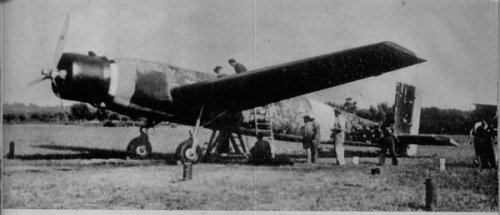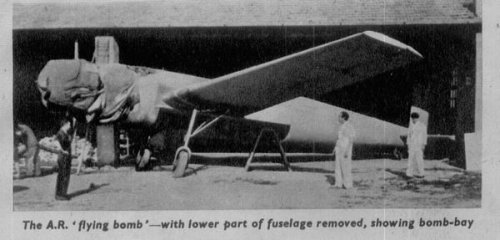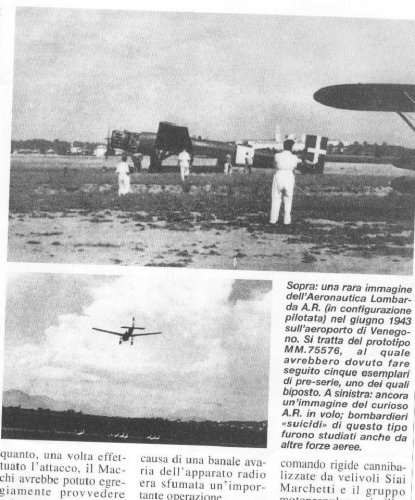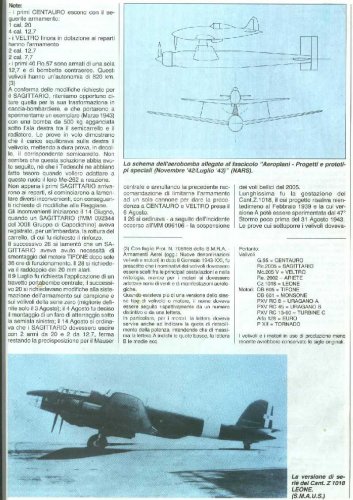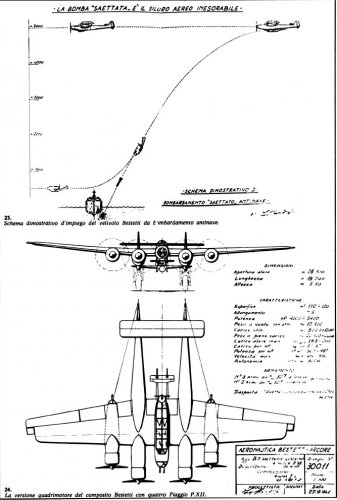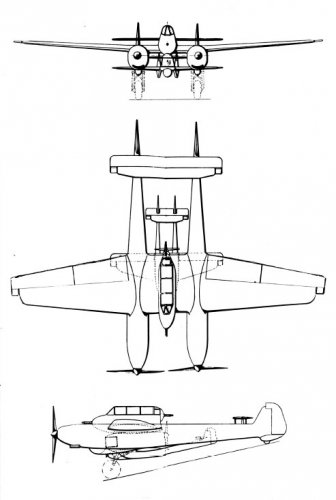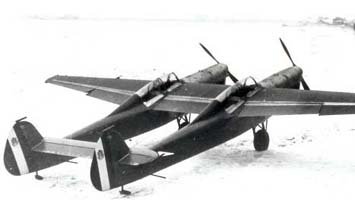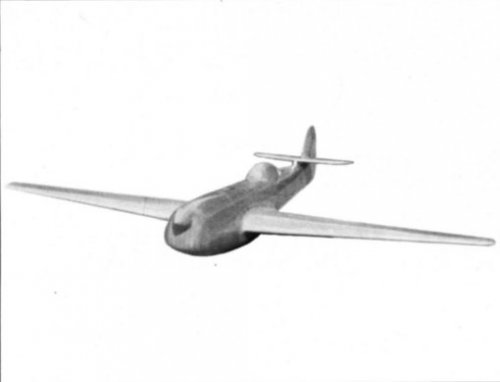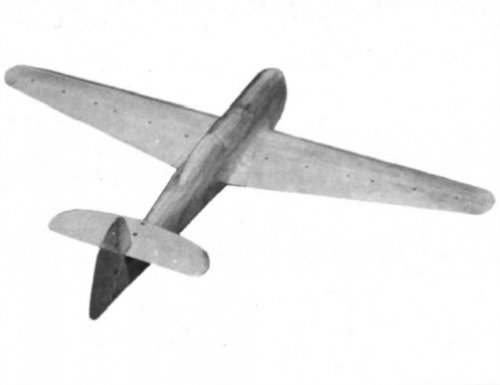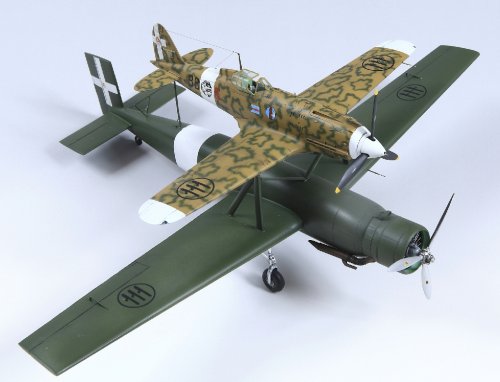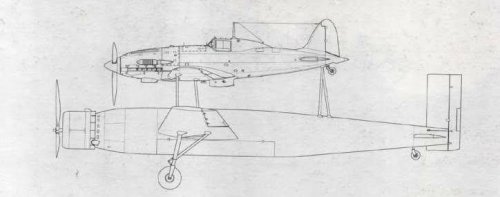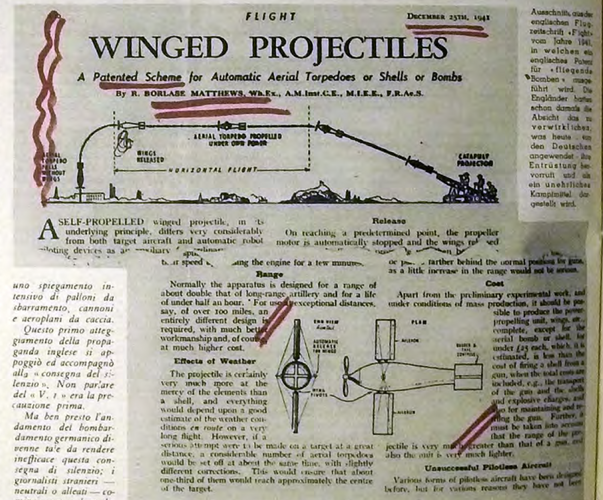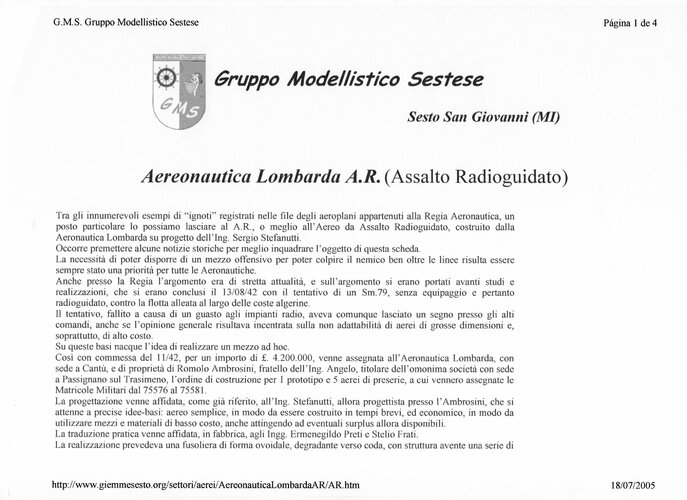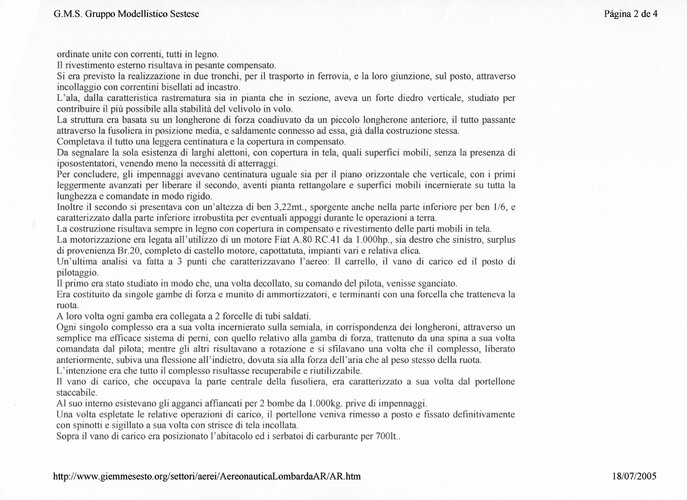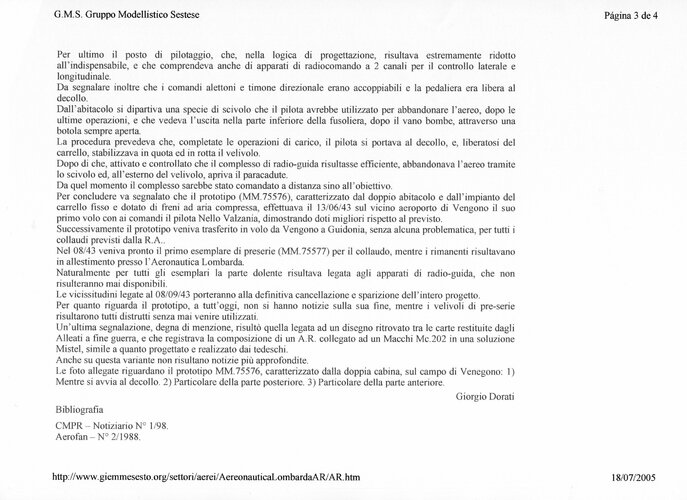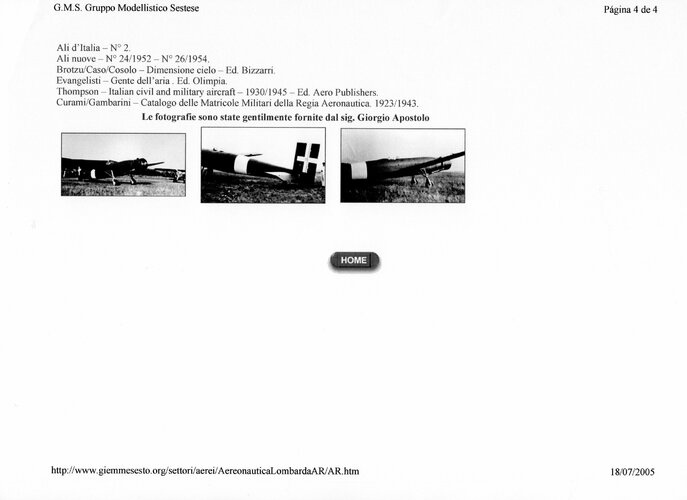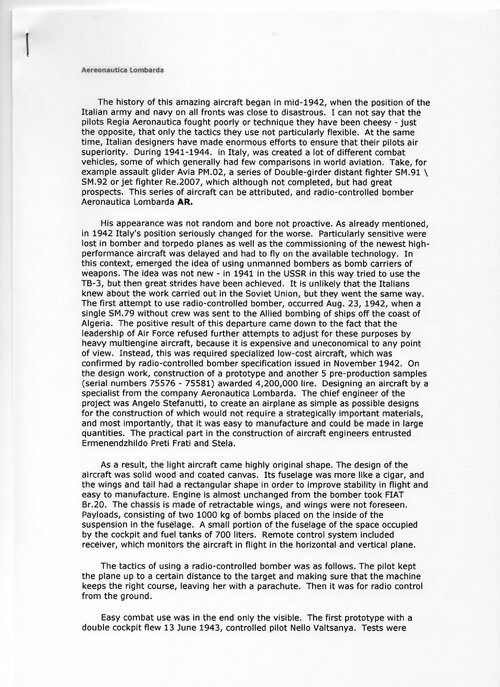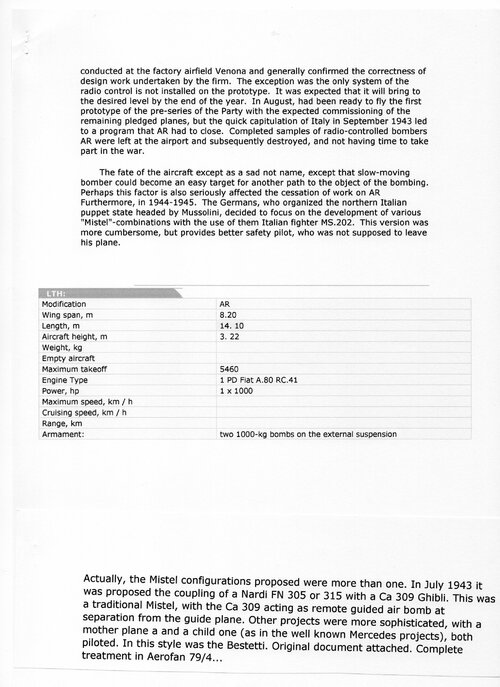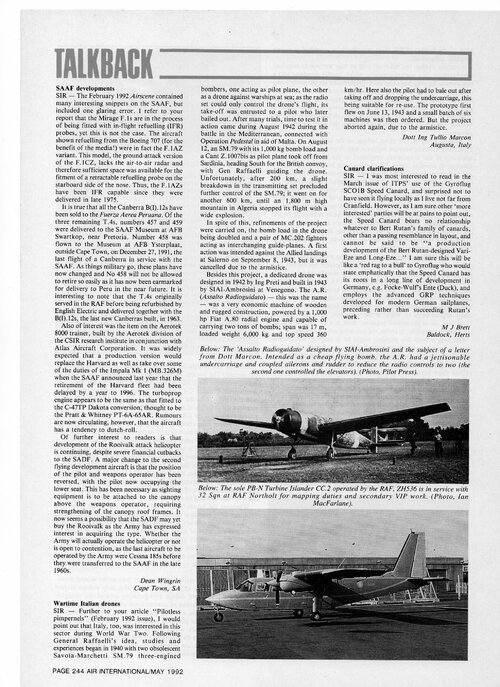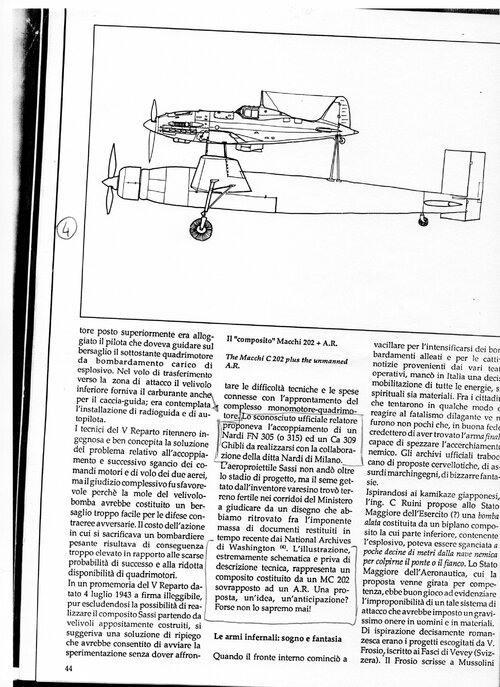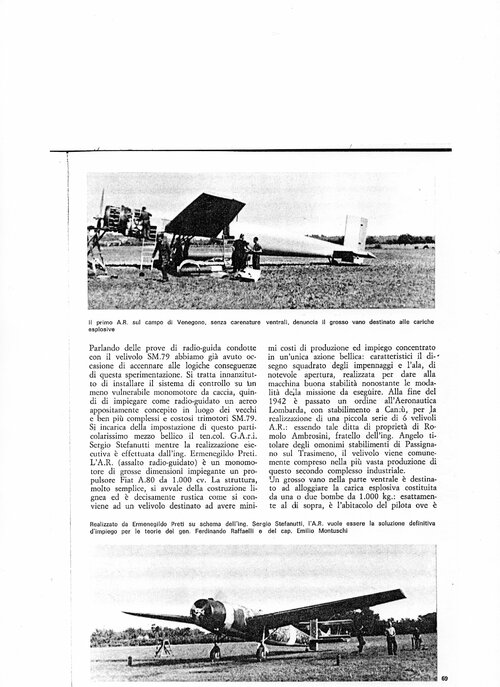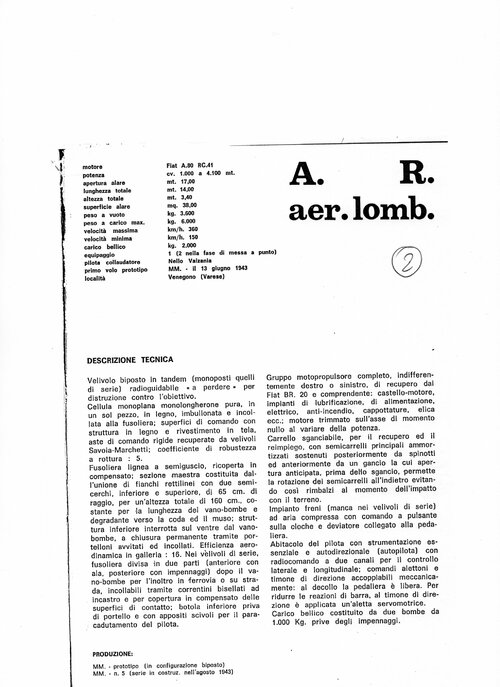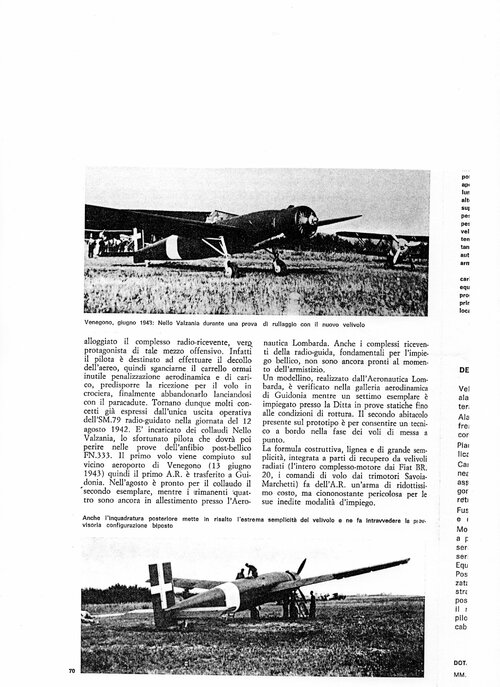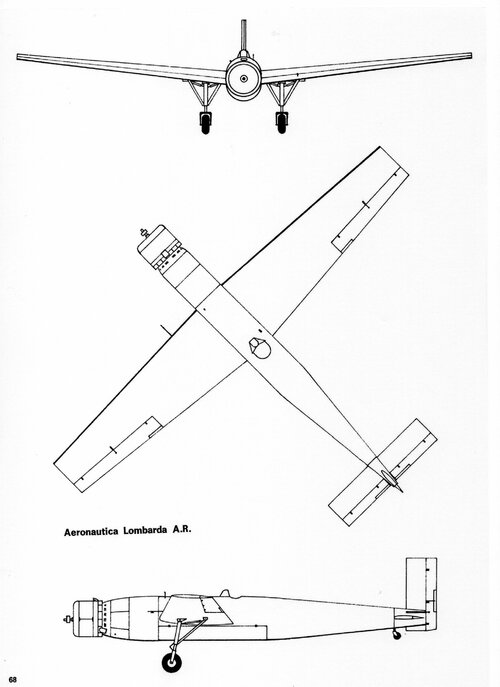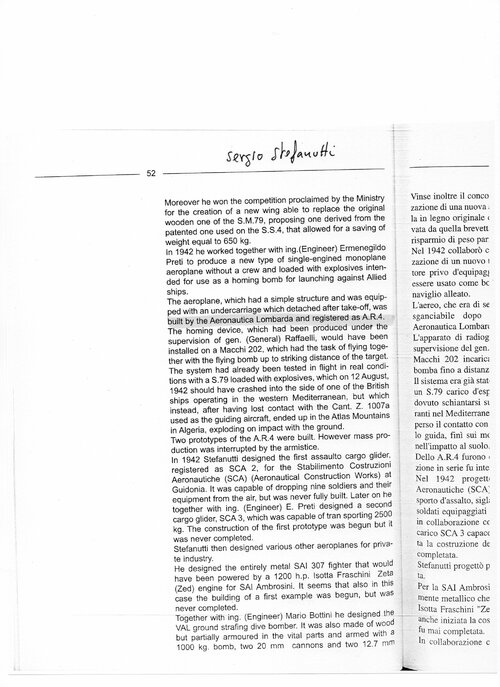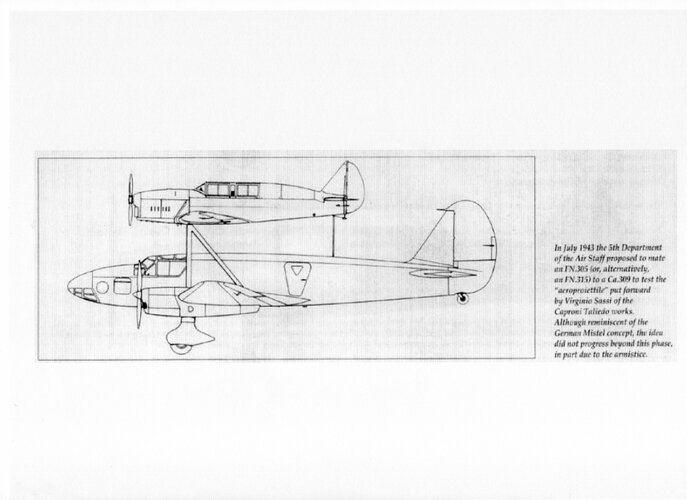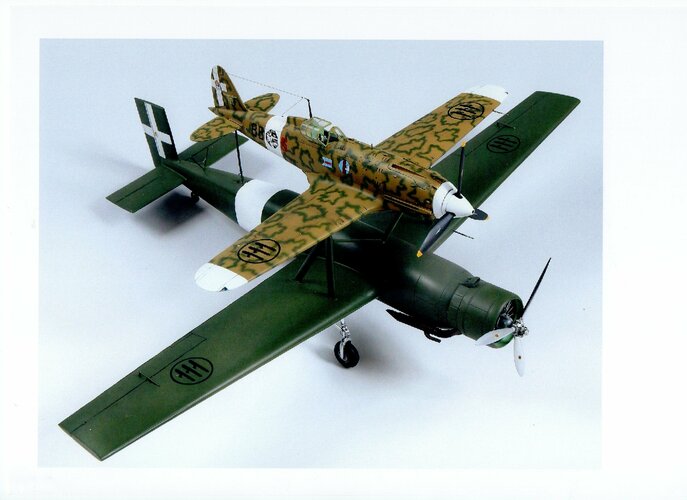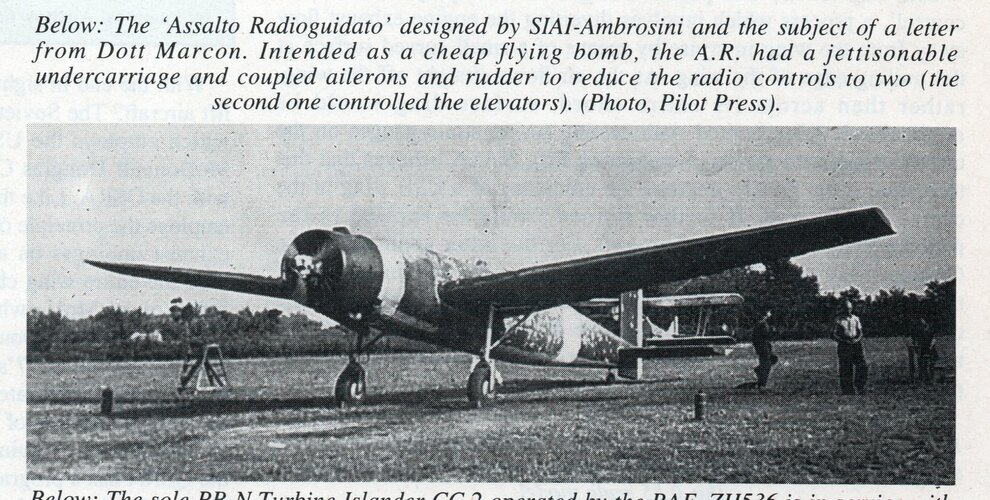- Joined
- 11 March 2006
- Messages
- 8,625
- Reaction score
- 3,806
Another theme, that perhaps is snow from the last year for our experts, but maybe
it's nevertheless interesting: In RAF Flying Review 7/55 there's an article about the
S.A.I. Ambrosini A.R. (Assalto Radioguidato), a radio controlled flying bomb, powered
by a 1000hp Fiat A.80 egine. The aircraft had an simple cockpit, too, for a pilot, who
had to take-off, set course and then bale out. Armament was made up of two 1000 kg
bombs inside the fuselage. Although performance was modest with a top speed of
about 230 m.p.h. flying characteristics were said to be good. In the end, the five machines
built were destroyed, without ever used operationally.
it's nevertheless interesting: In RAF Flying Review 7/55 there's an article about the
S.A.I. Ambrosini A.R. (Assalto Radioguidato), a radio controlled flying bomb, powered
by a 1000hp Fiat A.80 egine. The aircraft had an simple cockpit, too, for a pilot, who
had to take-off, set course and then bale out. Armament was made up of two 1000 kg
bombs inside the fuselage. Although performance was modest with a top speed of
about 230 m.p.h. flying characteristics were said to be good. In the end, the five machines
built were destroyed, without ever used operationally.

